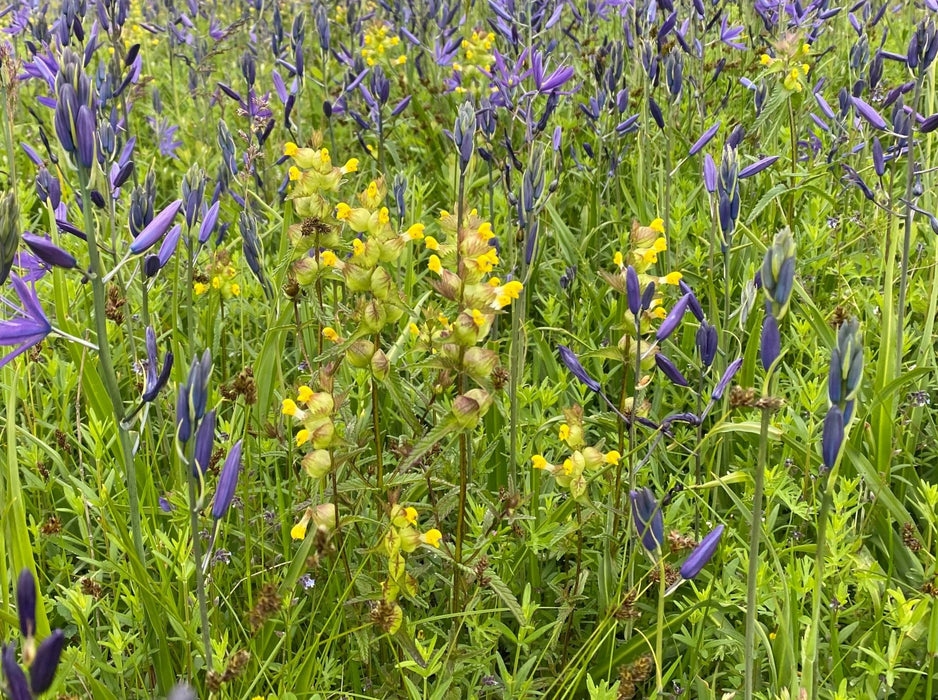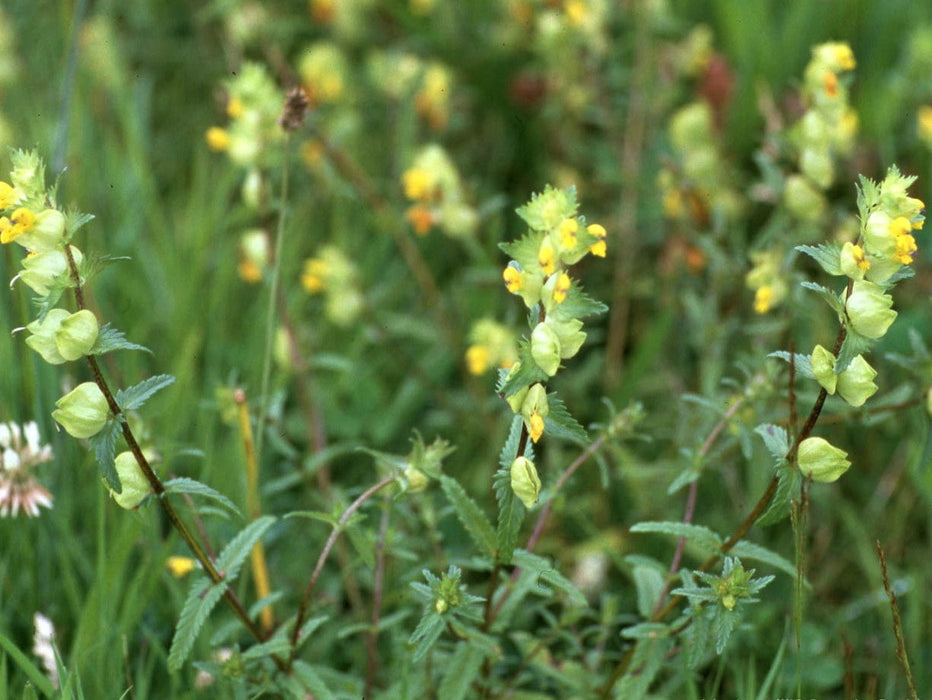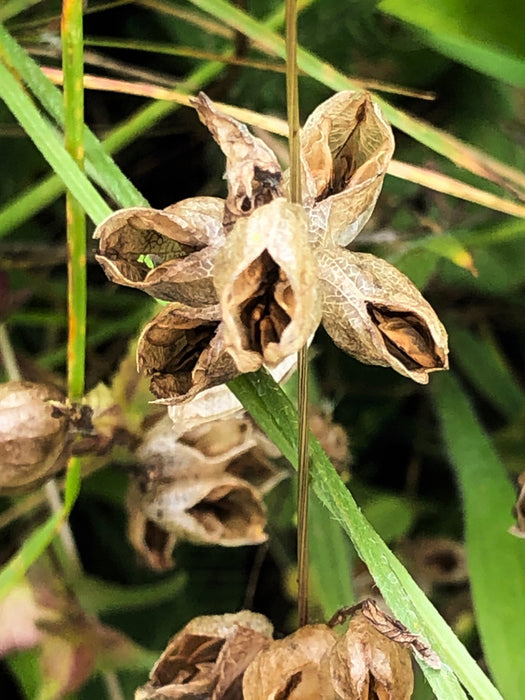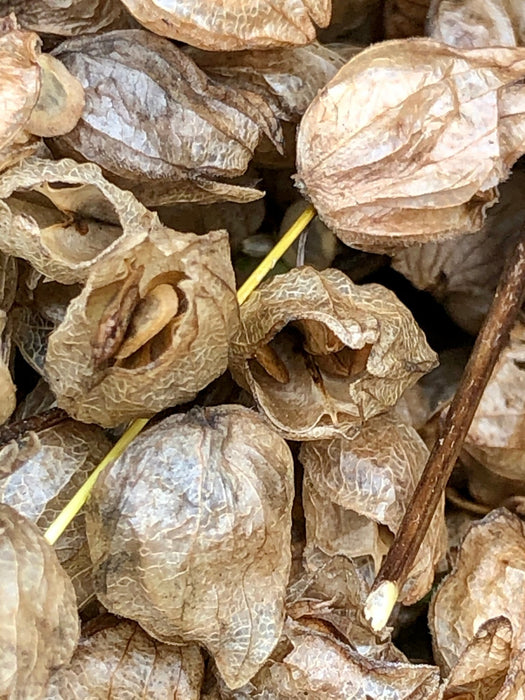
Yellow Rattle Seeds (Rhinanthus minor)
Control Weedy Grasses Naturally
Dubbed the "meadow maker" in the UK, yellow rattle is an amazing hemi-parasitic annual plant that weakens grasses through haustoria (root-like structures that attach themselves to the roots of grasses -- robbing them of nutrients). This reduces the vigor of meadow grasses, and allows other wildflowers to gain a competitive advantage.
In European wildflower restoration, a tremendous amount of work is currently underway to better understand and harness yellow rattle to reduce grasses and increase wildflower dominance. The results, at their best, are spectacular. On our own farm, where the yellow-rattle is plentiful, the native forbs have never looked better. The invasive old world grasses are less vigorous after rattle establishes within a sward. It's a great alternative to the use of herbicides for natural grass control.
Yellow rattle is a circumpolar plant -- distributed across parts of the Northern Hemisphere, however it is rare or absent across most of North America. Outside of Alaska and Canada, only the Pacific Northwest has a few scarce, remnant populations of this amazing, bumble bee-pollinated meadow plant.
The taxonomy of various yellow rattle subspecies is imprecise and there are various possible synonyms for the same subspecies, which historically including Rhinanthus minor subsp. groenlandicus, Rhinanthus minor subsp. minor, Rhinanthus crista-galli, Rhinanthus minor subsp. borealis, Rhinanthus arcticus, Rhinanthus borealis, Alectoropholus minor, and possibly others. Similar to other circumpolar species (e.g. selfheal, tufted hairgrass, yarrow, prairie junegrass, common rush), identifying subspecies differences can sometimes be tricky. We believe our rattle is R. minor subsp. minor, based on the blueish tip of the upper flower structure.
Due to the extensive hand harvesting we put into this plant, packed sizes are relatively small (around 400 seed) -- enough to experiment with on a small scale. Under optimal conditions, yellow rattle is a good re-seeder and will increase in numbers over time.
Our understanding of yellow rattle is evolving, but here's some basics of what we know:
- Only sow into areas of established vegetation. Yellow rattle does well with weedy grasses but it can also use a few wildflowers as hosts, including yarrow and lupines. Don't worry, it doesn't seem to cause much harm to wildflowers.
- To prepare an area for yellow rattle seed, mow it as low as possible. Then mow it again. And again. The closer to the ground you can mow, and the more thatch you can remove, the better.
- Yellow rattle in our region can be sown before the fall rains, although we've even had success with spring plantings. It seems you don't need to cold stratify yellow rattle.
- Yellow rattle needs full sun. No exceptions.
Watch for this fascinating, beautiful, bumble bee-attracting wildflower the following May.
Packet size: 1.0 gram (Approximately 400 seeds).




